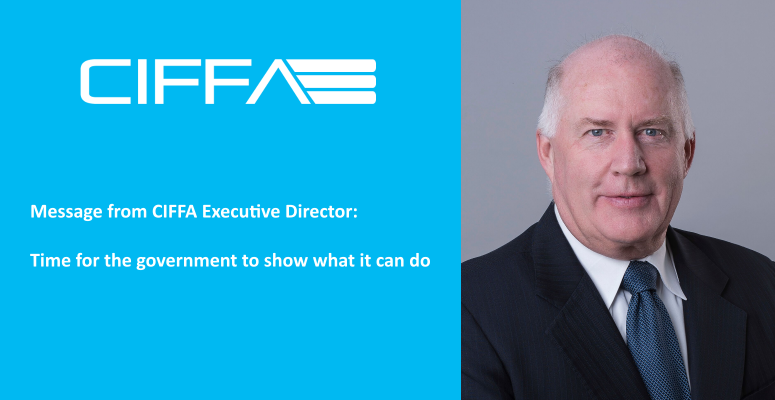
Canadian Freight Forwarders and Third Party Software Providers
How third-party software has become critical to succeed in freight forwarding and CHB.
The following is a contributed article by Cris Arens, Managing Partner, Logisyn
When I started my logistics career in the late 1980s, telex machines and typewriters were prominent in freight forwarding. Fax machines were almost magical when I was traveling around the world for a Chicago-based freight forwarder. While some logistics entrepreneurs had invested in a few personal computers, a good operator typing 70 words per minute was far more efficient than those old IBM machines fighting with dot matrix printers. It is still hard to believe what we accomplished without cell phones, email, internet or networked computers back in the day.
As a young man, I saw a different future and co-founded Fountainhead International. Our product was CargoWise which set out to build Windows-based systems for midsize freight forwarders in the USA and Canada.
For the past 14 years, with Logisyn Advisors Inc., a global M&A company for the logistics industry, I have pursued a new interest in mergers and acquisitions for logistics service providers (freight forwarders, truck brokers, trucking companies, e-commerce, etc).
Over the past two years, Logisyn Advisors has spent a lot of time researching and networking with logistics technology firms. Technology is core to the M&A integration process. Smart buyers and sellers need their advisors to understand this space. From startups to the new unicorns we have met many interesting tech entrepreneurs around the world. The industry has come a long way in terms of technology; however, Logisyn Advisors believes this is just the tip of the iceberg.
The five main points below apply to freight forwarders around the world who should all be asking these types of questions.
- What is the long-term ownership exit strategy?
For privately held companies, ownership’s long-term strategy is critical in determining tech budgets. If ownership has built a lifestyle business with a strategy to hand off to the next generation or exit 2-10 years down the road, you needed to begin investing in technology yesterday. In contrast, if you are planning on pursuing an exit strategy in the near future, switching systems may hurt your valuation short term. If you sell the firm to a strategic buyer (versus a financial buyer who would use the company as a platform), the new owners will be on their own TMS / visibility system. They will most likely have you switch again. Implementing new technology is painful, so make sure you think this area out before you start your research.
- One size does not fit all in terms of Freight Forwarding / CHB solutions: TMS / Back office
If you are a multinational freight forwarder who needs customs capabilities in multiple countries with full global accounting…. your TMS solution was most likely already mentioned in this article. That game is over until a new competitor steps forward with a real global solution. However, if you are a 50-employee Canadian freight forwarder with offices in Toronto, Vancouver, and Montreal, you don’t necessarily need or want that complexity or expense. There are great TMS providers out there for mid-size forwarders who have deep domain knowledge with country specific or regional expertise. With the new integration tools and companies focused on logistics (chain.io for example) you can integrate with customers, agents and vendors around the world even if they are on different systems.
- You need to understand the tech ecosystem that is thriving around the TMS / back office providers
Shippers and consignees are demanding information solutions from their logistics providers that were just a dream 10 years ago. The list includes difficult shipment routings / tracking requirements at every step of the supply chain, visibility software, OCR standardization, electronic bookings with all vendors, global payment systems, AI enabled document automation, are just a few examples. Seamless integrations to customer ERP systems and competing TMS systems will become a requirement to compete.
Logisyn Advisors has spent a lot of time and money researching and writing about this topic in the logistics tech sector. Do not underestimate the importance of the adoption of quality visibility software. Every TMS provider claims to have visibility software, but if you ask the freight forwarders or their customers, many disagree that current TMS visibility solutions meet the new customer requirements. The unicorns in this space have convinced their investors that they will change the game. Firms like FourKites and Project 44 are the current leaders, but there are more coming.
(A research paper on this topic is available.)
- You need to truly understand your customers’ tech needs and capabilities in order to compete. Each customer has unique IT needs and the game is changing
It is always about the customer. COVID did so much damage to the world, but it also forced us to think and act differently. One positive side effect is it made global freight companies and their customers see the value of investing in technology. For the small and mid-size CIFFA members without large IT budgets, that can seem daunting, but don’t forget your main advantage. You can be nimble and move fast. When a firm has thousands of employees on legacy systems, implementing technology needs to go through committee and testing processes that can take six months to two years. Use your advantage.
- Finally, make sure your technology provider is in it for the long haul.
Before the 2002 dot.com bubble hit, financial institutions were throwing money at tech companies promising to cut out the freight forwarder. We kept a list of firms that had raised over $10M on a whiteboard in my office. We always resented these companies because we had worked around the clock living on credit cards to build a real product. In contrast, these firms had raised millions of dollars selling vaporware via PowerPoints to financial people who did not understand the industry. When the tech crash happened, our team felt vindicated when we crossed names off the whiteboard competitor list.
Twenty years later, we are in a different environment. But with rising interest rates, money has become more expensive for investors and they will want their portfolio companies to become profitable sooner than later. If your software partners had a Series A, Series B, Series C…into infinity fundraising strategy, make sure you have bet on the right horse.
We always seem to be moving from one crisis to another in logistics. It is the life we have chosen and the tech changes are going to change the game. With that said, Logisyn believes the small / midsize freight forwarders can thrive with technology in the new environment; but it will require strategic planning.
For more information about TMS providers best suited for both large and small freight forwarders in Canada, and about the interesting tech ecosystem building up around the TMS providers,please email max.arens@logisyn.com.



